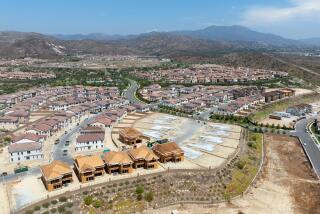Irvine Co. Was Right Even if Wrong in Bay Land Sale, Lawyer Argues
- Share via
Even if they were wrong, the honest belief of Irvine Co. officials that land they sold to the state for $3.4 million was owned by their company justifies their conduct, a lawyer for the development firm argued Thursday.
That was one of the responses, as closing arguments in a monthlong trial ended Thursday, to environmentalists’ claim that three islands in Upper Newport Bay have belonged to the state since 1850, and the Irvine Co. therefore should return the money it was paid for them.
When Raymond L. Watson, then president of the Irvine Co., signed the agreement selling the islands in 1975, the state was paying for land the people of California had owned since statehood, the lawsuit claims.
But Irvine Co. lawyer Gregory Lindstrom argued that Watson’s testimony “without hesitation or qualification” to his “belief in the company’s title” at the time of the sale should end the case in victory for his client.
Lindstrom also insisted that evidence from mapping specialists, legal experts and scientists during the trial proves clearly that the Irvine Co. did own the islands.
At the end of two long days of closing arguments Thursday, Orange County Superior Court Judge Judith M. Ryan took the case under submission.
Listening attentively were Frank and Frances Robinson, longtime courtroom foes of the Irvine Co. Their first lawsuit against the Irvine Co. halted its plans in the late 1960s to develop the Back Bay into a pleasure harbor. Instead, the entire Upper Newport Bay was preserved, and the state bought out the Irvine Co.’s property interests there for $3.4 million--triggering the present lawsuit.
Watson testified that he relied on opinions of lawyers for the Irvine Co. and the state in forming his belief that the company owned the Back Bay land that was sold.
The accuracy of those opinions has been repeatedly challenged by environmentalist lawyer Phillip S. Berry. Berry contends that the islands were tidelands, which may not be sold into private hands.
The marsh islands are today above high tide. The dispute has centered on the question of when they rose from the bottom of the bay.
Experts on both sides clashed sharply over that question, and the dispute has been complicated by a scarcity of historical data. Opposing scientists disagreed over the effects of changes in sea levels, tides and movement of land masses over the last 137 years.
More to Read
Sign up for Essential California
The most important California stories and recommendations in your inbox every morning.
You may occasionally receive promotional content from the Los Angeles Times.













